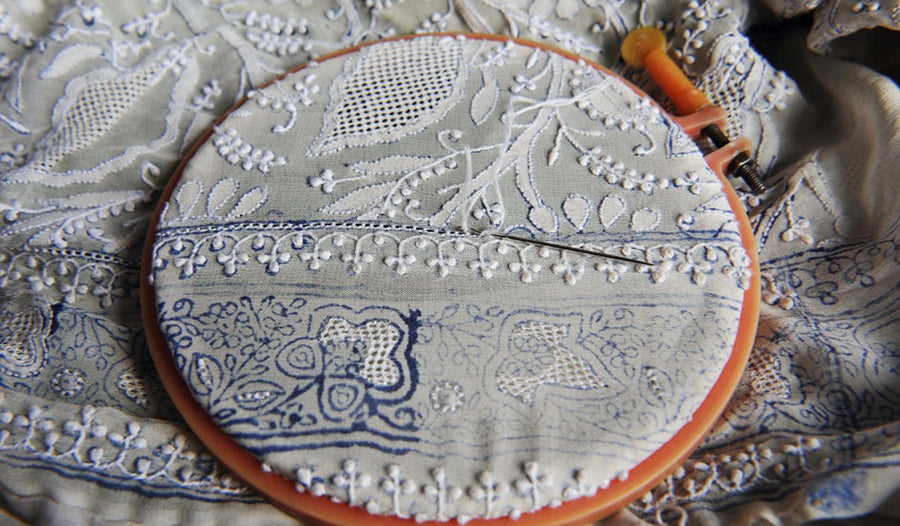
Chikankari Embroidery

Next week, on Wednesday 7th July, we're excited to host an evening of discussion on the subject of 'Woven Air', including a film screening of Legend of the Loom. This documentary focuses on Muslin cloth; its trade and the demise of the industry. Reviewed as a ground-breaking film, Legend of the Loom tells the full story of this world-famous cloth. Following the screening we will be joined by Sonia Ashmore who will discuss muslin in Georgian England, and Mamta Varma who will talk about Chikankari embroidery. Read on to find out more about origins of this diaphanous and delicate embroidery style, originally published in Issue 66 India.
The origins of chikankari are as elusive as the shadowy designs that gently wend their way across this fine muslin. The embroidery is thought to be derived from the Persian ‘chikeen’ meaning ‘coin’ or ‘delicately embroidered fabric’: the name ‘chikankari’ means ‘fine work’ on the Indian subcontinent. The technique may have been introduced from Persia, but with origins shrouded in mystery, romantic speculation has taken over. Many interpret the ‘flowered muslin’ to be found in ‘Indian lands’ mentioned in a Greek text from the third century BCE, and white-clad figures depicted in the ancient Ajanta cave paintings, as evidence of chikankari’s ancient origins.

Image: Summer 2019 Muslin postcards collection, courtesy of Injiri.
Another legend is that Queen Noor Jehan, a member of the Persian nobility who married Mughal Emperor Jahanghir in 1611, introduced the technique at court. She embroidered a beautiful head covering for her husband who was so delighted that her delicate shadow work became the envy of the court. This inspired the court ladies who vied to refine their own embroidery and incorporated her technique.
Video: Watch the trailer for Legend of the Loom
Embroidered in white cotton thread on the sheerest muslin, chikankari’s delicate form means no examples survive from before the early 19th century. Shadow work or bakhia embroidery creates remarkable effects by layering stitches on the reverse of the fabric, creating a spectre of the design which is then outlined in tiny running stitches on the right side. The complex interplay of texture, shadow and light is created with a variety of stitches and techniques including phanda to create ornate knots, and jali work: a mesh is created by placing needle holes in between the weft and warp threads and binding them with stitches to stabilise the fabric.
Chikankari has been a valuable export since the early 19th century when professional workshops or karkhanas were set up to organise production. Contemporary chikankari is often seen in Bollywood films and is available in the Chowk market of old Lucknow where beautiful diaphanous fabrics are graced by a whispered tracery of design.
This extract was written by Sarah Jane Downing. Read more about the history and beauty of Chikankari in Issue 66 India.
Book tickets and find out more about our Woven Air talk on the event page: Woven Air, Online Talk and Film Screening of Legend of the Loom

1 comment
Good